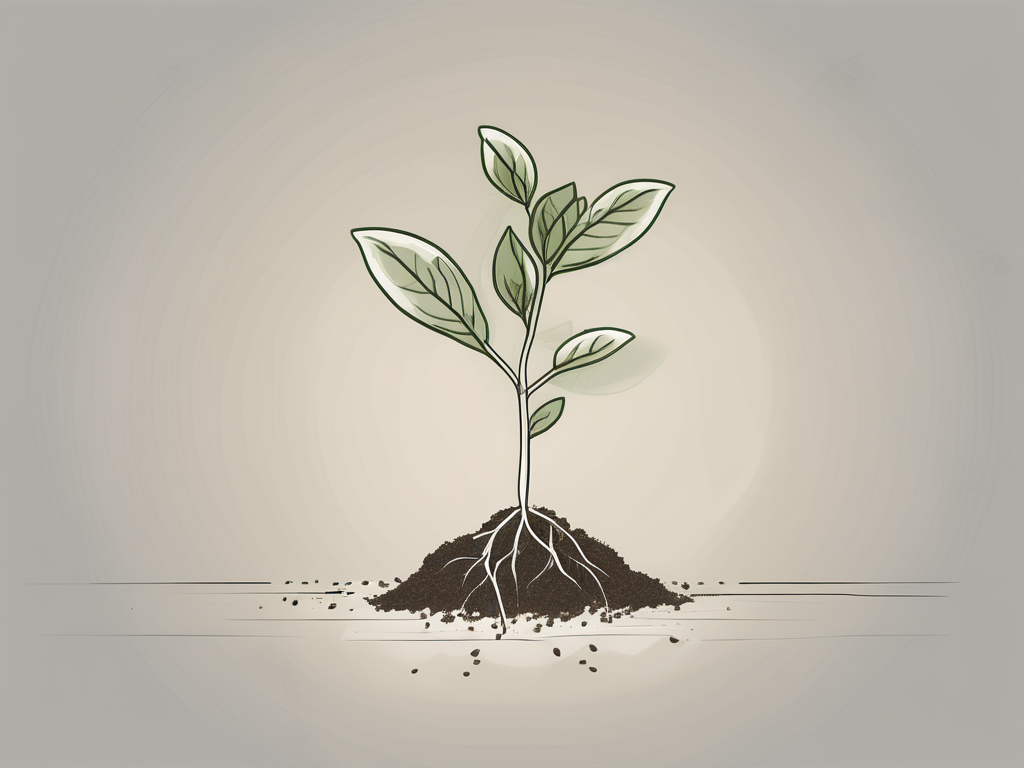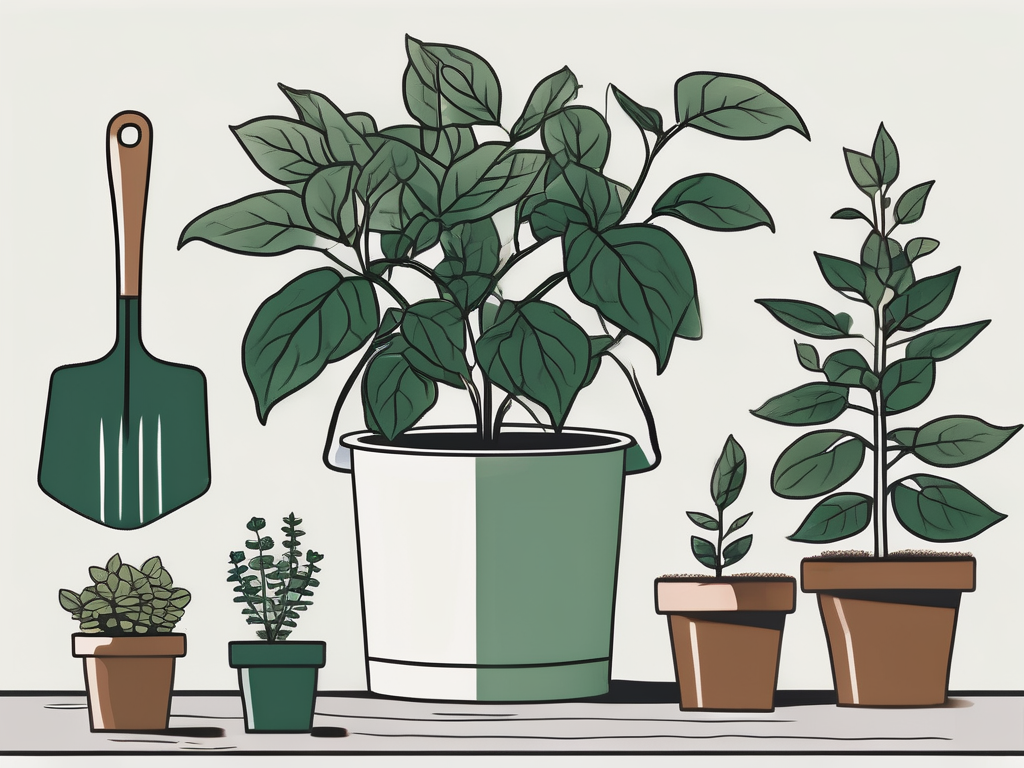
Ever found yourself staring at your Monstera plant, wondering how you could have more of these charming, leafy wonders around your home? You're not alone! Many plant lovers are eager to multiply their Monstera collection without breaking the bank. The great news is that propagating Monstera is not just possible—it's an enjoyable and rewarding experience that anyone can master with a little guidance.
In the sections that follow, we'll walk you through the step-by-step process of propagating your Monstera. We'll cover everything from choosing the right time and tools to nurturing your brand-new plantlets. So, grab your gardening gloves, a pair of pruning shears, and let's get you started on this leafy adventure!
Understanding Monstera Propagation
Before we jump into the how-tos, it's helpful to understand a bit about what propagation actually entails. Propagation is a fancy word for multiplying plants. Essentially, you're taking a part of the plant—like a cutting—and encouraging it to grow into a new plant. For Monsteras, this typically means using stem cuttings, which is both effective and straightforward.
Why would someone want to propagate their Monstera? Well, besides getting more beautiful plants for free, propagation allows you to share the joys of plant parenthood with friends and family. Plus, it can be a fun experiment to see how well you can grow new life from an existing plant. And let's not forget the aesthetic appeal of having multiple lush Monsteras gracing your living space!
Choosing the Right Time to Propagate
Timing is everything when it comes to propagation. For Monsteras, the best time to propagate is during their growing season, typically from spring to early summer. During this period, the plant's natural growth processes are in full swing, which increases the chances of your cuttings taking root successfully.
But why is this so important? Well, during the growing season, plants are more active, meaning they're better equipped to handle the stress of propagation. The warmer temperatures and increased light encourage root development, giving your new Monstera the best chance at thriving. So, if you're planning to propagate, mark your calendar for those warmer months.
That said, if you're feeling adventurous or if your Monstera looks particularly healthy, you can attempt propagation during other times of the year. Just be prepared to provide extra care and attention, as the process might take a bit longer outside the growing season.
Gathering Your Supplies
Before you make the first cut, let's talk about what you'll need. Having the right tools and supplies on hand can make the process smoother and more enjoyable. Here's a handy list to get you started:
- Pruning Shears: A sharp, clean pair of pruning shears is essential for making clean cuts. Dirty or dull tools can damage the plant and introduce disease.
- Water or Soil: Depending on whether you plan to root your cuttings in water or directly in soil, you'll need a clean glass jar or a small pot with fresh potting mix.
- Rooting Hormone (Optional): While not strictly necessary, a rooting hormone can help stimulate root growth and increase the success rate of your propagations.
- Clear Plastic Bag (Optional): If you're rooting in soil, a plastic bag can create a mini greenhouse effect, keeping humidity high around the cutting.
- Label or Marker: If you're propagating multiple plants, labels can help you keep track of which cuttings are which.
Once you've gathered your supplies, you're ready for the next step: selecting the perfect cutting.
Selecting the Perfect Cutting
Not all parts of the Monstera are equally suited for propagation. For the best results, you'll want to choose a stem that has at least one node and one healthy leaf. The node is the small bump on the stem where new roots and leaves will grow from. Without it, your cutting won't be able to develop into a new plant.
When selecting your cutting, look for a stem that's healthy and free from any damage or disease. Ideally, the leaf should be mature and vibrant, as this indicates that the plant is in good health. Avoid using leaves that are brown, yellow, or wilted, as these are less likely to thrive when propagated.
Once you've found the right stem, use your pruning shears to make a clean cut just below the node. It's important to cut at a 45-degree angle to increase the surface area for rooting. With your cutting in hand, you're ready to move on to the next stage.
Rooting in Water
One popular method for propagating Monstera is rooting in water. It's a great way to watch the roots develop and can be a fun project for plant lovers of all ages. Here's how to do it:
- Fill a Jar: Start by filling a clean glass jar with room-temperature water. Make sure the jar is tall enough to support the cutting without it tipping over.
- Place the Cutting: Gently place the cutting in the jar, ensuring that the node is submerged in the water while the leaf remains above the surface.
- Find the Right Spot: Position the jar in a warm, well-lit spot that's out of direct sunlight. A windowsill that gets indirect light is usually perfect.
- Maintain the Water: Change the water every few days to keep it fresh and oxygenated. This helps prevent the growth of bacteria and encourages healthy root development.
- Watch for Roots: Over the next few weeks, keep an eye out for roots emerging from the node. Once they're a couple of inches long, your cutting is ready to be transferred to soil.
Rooting in water can take anywhere from a few weeks to a couple of months, so patience is key. The reward, however, is watching those lovely roots unfurl right before your eyes.
Rooting in Soil
Another method for propagating Monstera involves planting the cutting directly in soil. Some plant people prefer this approach because it reduces the risk of transplant shock when moving the cutting from water to soil. Here's the step-by-step:
- Prepare the Pot: Fill a small pot with well-draining potting mix. Monsteras prefer slightly acidic soil, so consider using a mix that's rich in organic matter.
- Insert the Cutting: Make a small hole in the soil and gently insert the cutting, ensuring the node is buried beneath the surface. Firm the soil around the base to support the cutting.
- Create Humidity: Cover the pot with a clear plastic bag to retain moisture and create a humid environment. This helps the cutting stay hydrated while it develops roots.
- Place in a Bright Spot: Like water propagation, place your potted cutting in a bright, warm spot with indirect sunlight. Avoid direct sun, as it can scorch the cutting.
- Water Sparingly: Keep the soil lightly moist but not soggy. Overwatering can lead to rot, which spells disaster for new cuttings.
With a little patience, you'll notice new growth peeking through the soil. That's your cue that your Monstera is happy in its new environment!
Caring for Your New Monstera
Congratulations! You've successfully propagated your Monstera, and now it's time to care for your new plant. Whether you've rooted in water or soil, there's a bit of a transition period as your cutting adjusts to its new life. Here's how to help it along:
- Gradual Acclimation: If you've rooted in water, gradually introduce your plant to soil. Start by potting it in a small container and slowly increase the size as it grows.
- Monitor Light Levels: Keep your Monstera in bright, indirect light to encourage healthy growth. If you notice the leaves yellowing, it's a sign that your plant may need more light.
- Water Wisely: Allow the top inch of soil to dry out before watering again. Overwatering is a common mistake, especially with young plants, so always check the soil moisture first.
- Fertilize with Care: Once your Monstera is established, feed it with a balanced liquid fertilizer every month during the growing season. This will keep it nourished and encourage new growth.
By following these care tips, your new Monstera will thrive and, before you know it, be just as lush and beautiful as the parent plant!
Dealing with Common Propagation Problems
Propagation doesn't always go perfectly, and that's okay. Even the most experienced plant parents encounter hiccups along the way. Here are a few common issues you might face and how to handle them:
- Yellowing Leaves: This can happen if your cutting is getting too much direct sunlight or if it's overwatered. Adjust the light and let the soil dry out a bit before the next watering.
- Roots Not Forming: If you're not seeing roots after several weeks, it might be due to low temperatures or insufficient light. Move your cutting to a warmer, brighter spot and be patient.
- Rotting Stem: This is often a result of overwatering. If the stem starts to rot, cut away the affected area and try rooting a fresh cutting.
Remember, every setback is a learning opportunity. The more you practice, the better you'll get at spotting and addressing these issues before they become major problems.
Creating a Monstera Display at Home
Now that you're on your way to having multiple Monsteras, let's talk about how to incorporate them into your home decor. Monsteras are known for their striking foliage and can make a statement in any room. Here are some ideas to get you started:
- Focal Point in the Living Room: Place a large Monstera in a decorative pot and position it in a prominent spot like the corner of your living room. Its broad leaves will add a touch of the tropics to your space.
- Monstera Shelfie: Arrange smaller Monsteras on a shelf with other complementary plants. Mix in some books or decorative objects to create a stylish vignette.
- Bathroom Jungle: Monsteras thrive in humid environments, making them perfect for bathrooms. Place one near a window or on a stand to take advantage of natural light.
- Bedroom Oasis: Add a calming touch to your bedroom with a Monstera on your nightstand or dresser. Their lush foliage can help create a relaxing atmosphere.
Get creative and let your personal style shine through as you display your Monstera collection. The possibilities are endless!
Sharing Your Monstera Journey
One of the joys of propagating plants is sharing the experience with others. Whether you gift a propagated Monstera to a friend or share your journey on social media, it's a wonderful way to connect with fellow plant lovers.
Consider documenting your propagation process with photos and notes. Not only will it help you track your progress, but it's also a great way to inspire others who might be new to plant propagation. You might even discover a new passion for plant photography or journaling!
And don't be shy about reaching out to plant communities online or in person. Sharing tips, successes, and even setbacks can be incredibly rewarding and can help you learn even more about your green companions.
Final Thoughts
Propagating Monstera plants is a delightful and fulfilling journey that allows you to expand your collection, share with friends, and enhance your home with stunning greenery. From selecting the perfect cutting to rooting and caring for your new plant, each step offers a chance to learn and connect with nature.
At Cafe Planta, we believe that plants have the power to bring people together and inspire us to connect with nature and each other. Whether you're an experienced plant parent or just starting out on your plant journey, we're excited to share our love of plants with you. If you have any questions about how to take care of your plants, we'd love to hear from you. Please feel free to email us or DM us on Instagram. Happy propagating!












